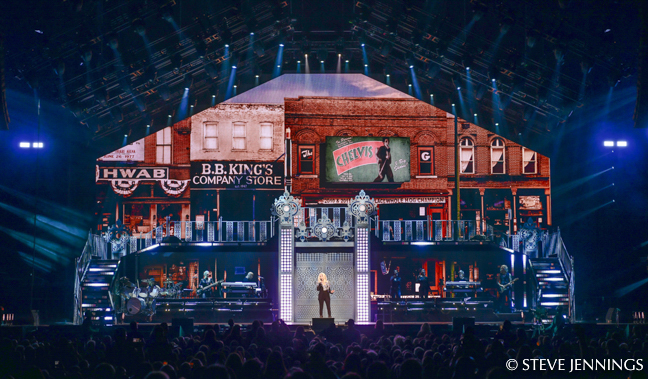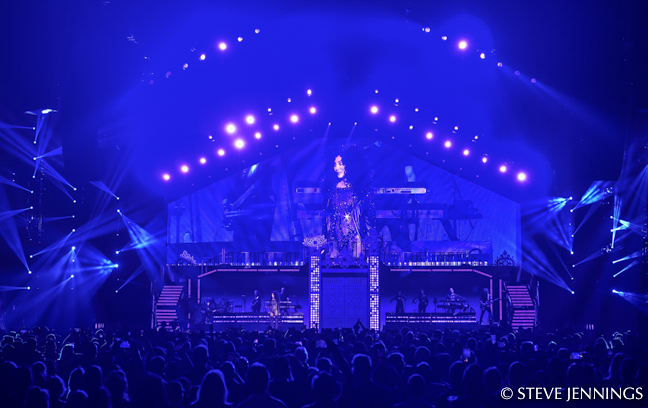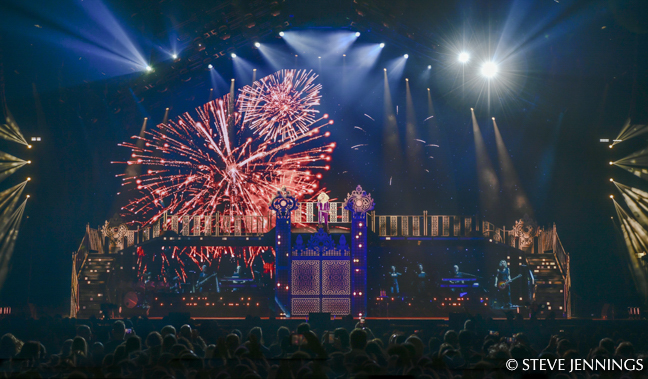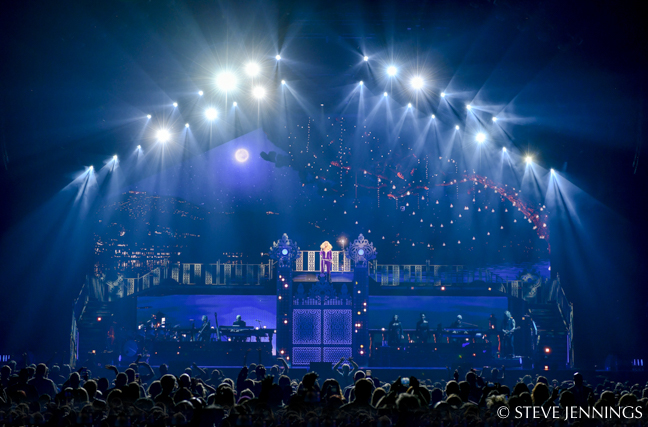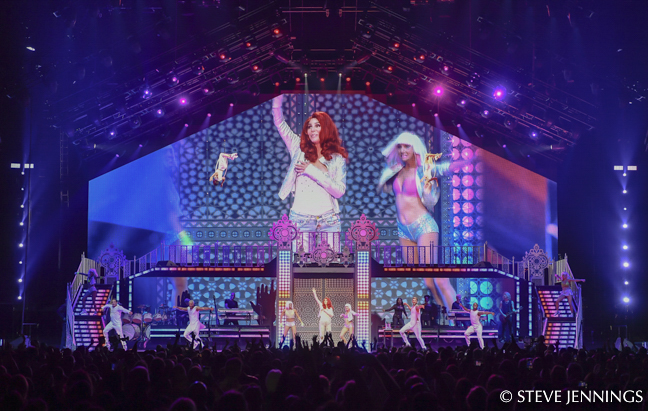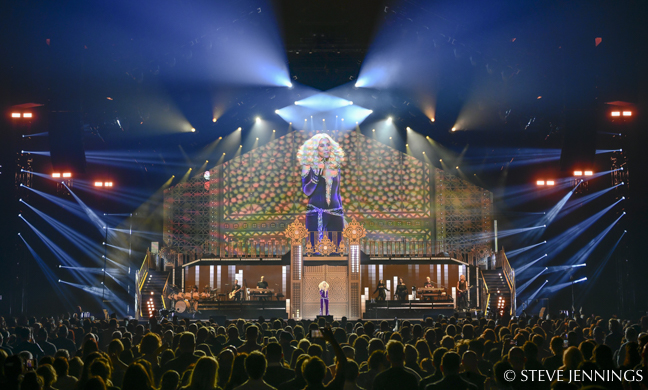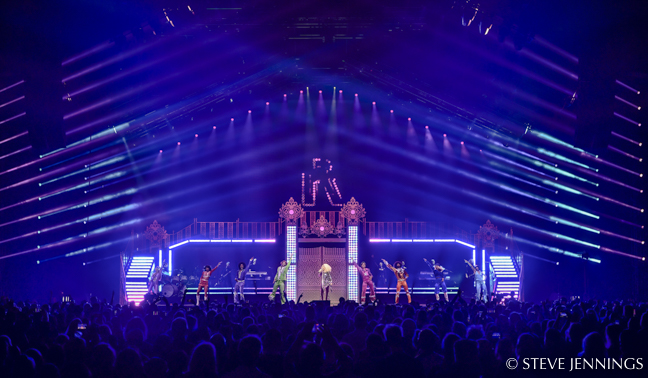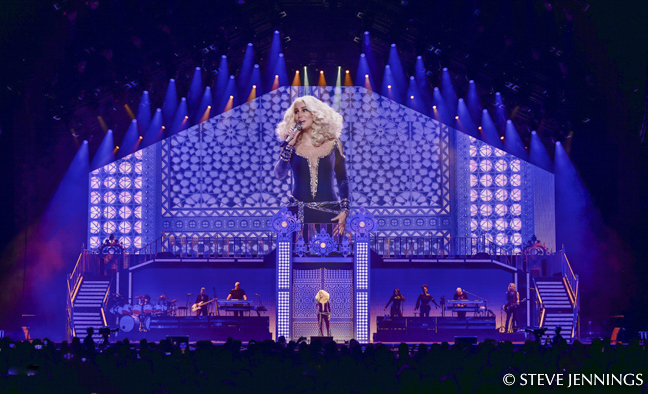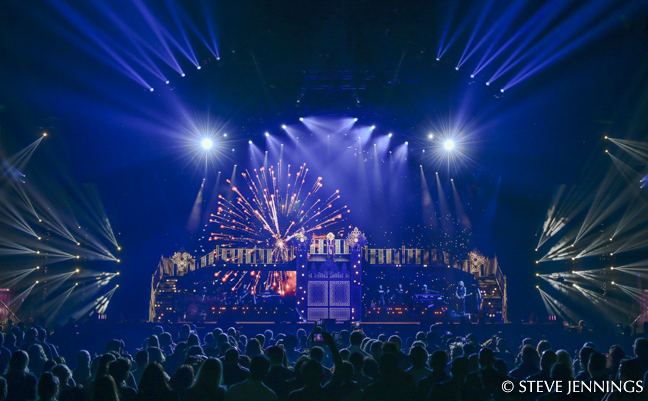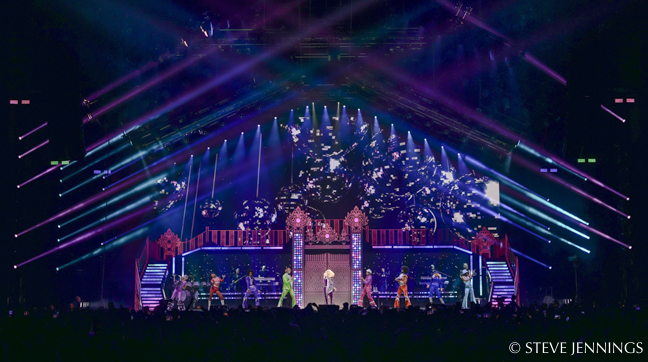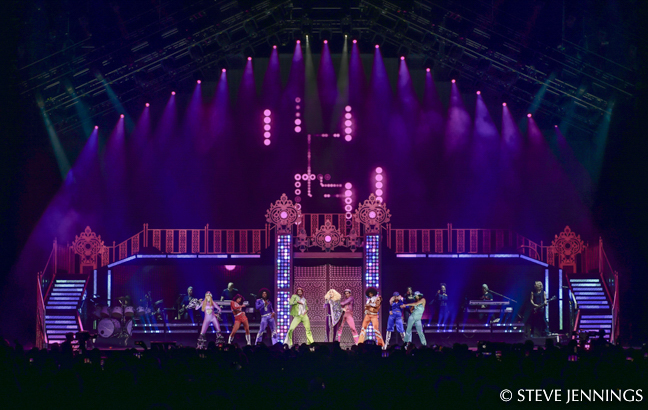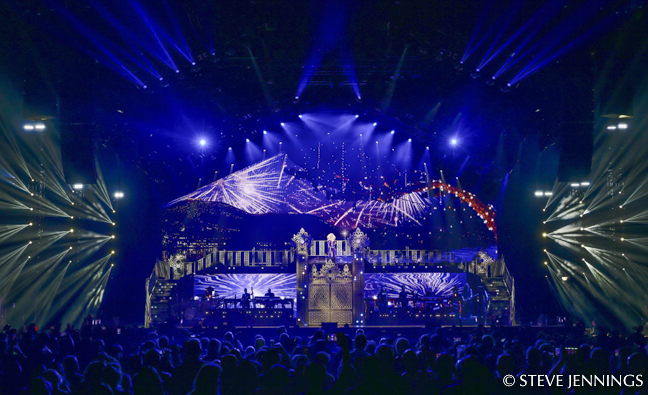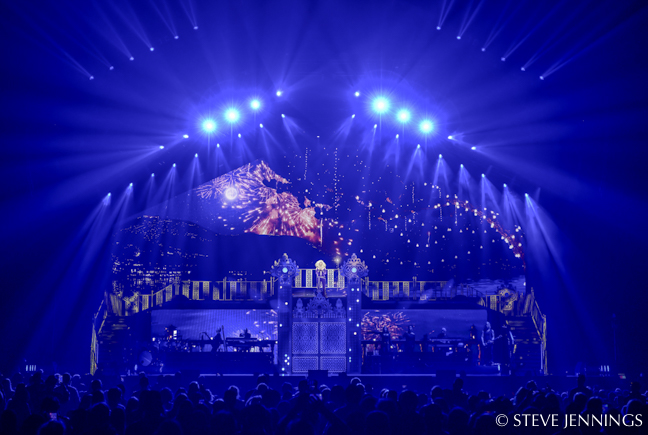
Along with more than 100 million albums sold since she launched her career with the late Sonny Bono in 1965, Cher keeps dazzling her fans from the live stage, with a packed schedule of performances for both her third series of Las Vegas residency shows (“Classic Cher,” at the Park Theater) and her “Here We Go Again” world tour. The latter is a 108-show marathon that kicked off in late 2018 and extends into 2020, with song highlights covering this superstar’s 55-year career in music, TV, movies and Broadway. We spoke with producer and lighting designer Baz Halpin, associate lighting designer and lighting programmer Eric Marchwinski and lighting director Steve Foster about the tour’s production and elaborate looks to go along with this artist’s many extravagant costume changes.
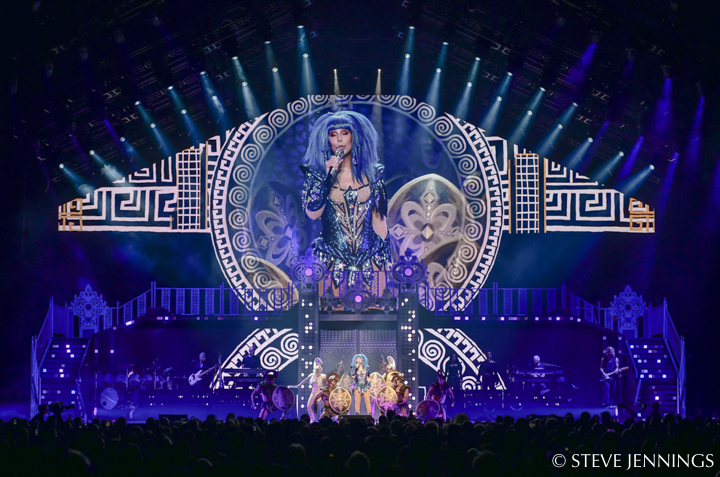
Baz Halpin
Producer & Lighting Designer
Baz Halpin brings up the point that Cher’s production for the Las Vegas residency is unique in certain areas. To take advantage of the capabilities of the theater show, they tried to have a cohesion between the touring show and the residency between a lot of the production elements and programming.
“I’ve had a working relationship with Cher for many years, dating back to her first Las Vegas residency at the Colosseum at Caesars Palace in 2008. After Cher’s first residency run at the Park Theatre [“Classic Cher,” in 2017] she wanted to revamp the show to ensure that returning audiences were getting something new. Cher’s manager, Roger Davies asked us to work with Cher and produce her vision for the new version of the show. The brief was to create something that would be unique [for the residency shows] but that would also have elements that could be integrated to a touring show.”
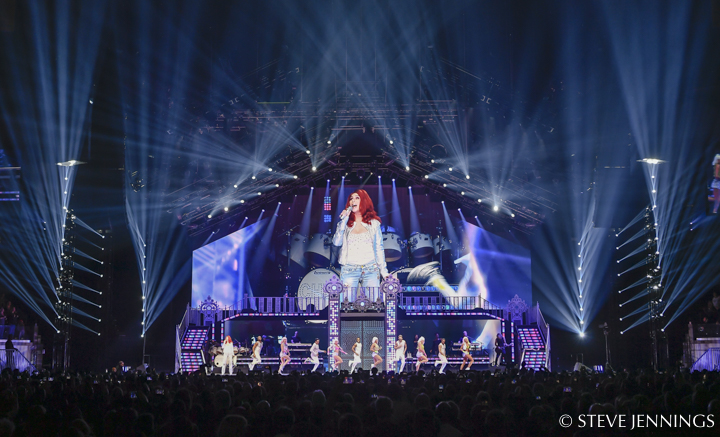
Cher has an incredible career spanning decades and genres, says Halpin, “so whenever she creates a new show, it’s important that we present each of the different phases of her career in an engaging way. With so many iconic performances both onstage and on film, we are not afraid to pay homage to those moments — sometimes in a recreation on stage; sometimes in video packages, which also help to entertain the audience while Cher is making one of her numerous costume changes.”
On this show, Vincent Richards of Silent House took the role of production designer. “Our longtime collaborators from Silent Partners Studio undertook the role of screens content producers, and Eric Marchwinski of Earlybird Visual was my associate lighting designer as well as programmer. In my role as the producer, I am responsible for all of the creative elements and their intersection with the budget and finances. In short, I’m tasked with ensuring that we get the maximum creative payoff and bringing it in on budget.
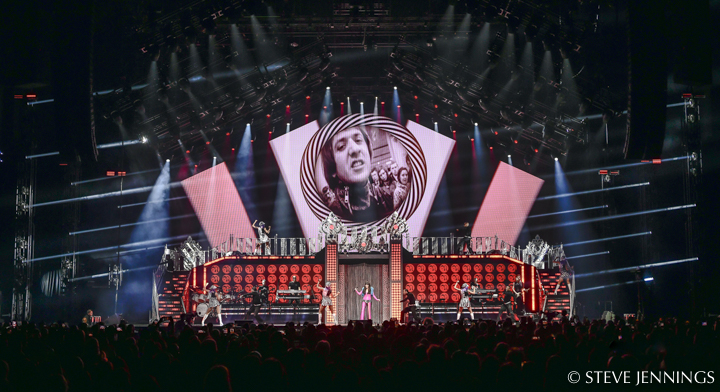
“This team and I have been involved in so many different shows together that we have a speedy, functional and very creative process. There is a history with the artist also that helps us quickly zone in on the types of ideas that Cher will be responsive to, and our own understanding of each person’s role in the process helps us to execute the ideas quickly and successfully.”
Halpin acknowledges the ever-present risk of being faced with stresses and pressures in this business. “It’s obviously demanding and a massive drain on your time, which in turn puts pressure on your life and family. The only way that I find you can mitigate some of those issues is to make sure that your team is solid and that they feel empowered to do what they do best. Processes are important to make sure that the time spent on any given task is used as efficiently as possible. Taking the time and attention in the early stages of design and planning to make sure that you are not dealing with mistakes or issues in the rehearsal period is critical to the overall success and ensuring that you are minimizing your own and the team’s sanity.”
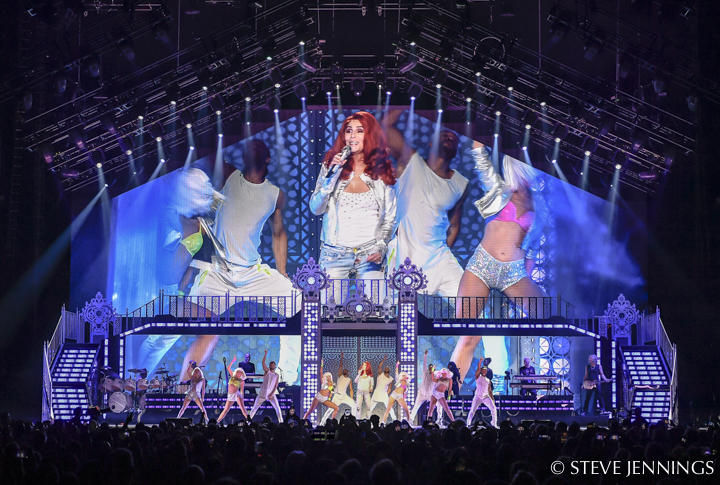
Eric Marchwinski
Associate Lighting Designer/Lighting Programmer
Eric Marchwinski says he’s been very grateful to work with Baz in this capacity on all of the shows they’ve done together, with their somewhat unique arrangement reflected in the job title, more commonly seen in a theatrical context than with concert touring. “We work together to figure out the arrangement of the fixtures, fixture types, and any other design elements. Next, we discuss the broad creative intent, and sometimes specific thematic or stylistic choices for sections or individual songs. Once we have all of our parts and pieces in place, Baz allows me and whoever I may be programming with at FOH the freedom to design the actual cues and program the show. Baz is then involved in giving notes and helping shape the broader picture, leaving some mental bandwidth to allow us to focus on the technical 1s and 0s that we have to manage on our end as well.”
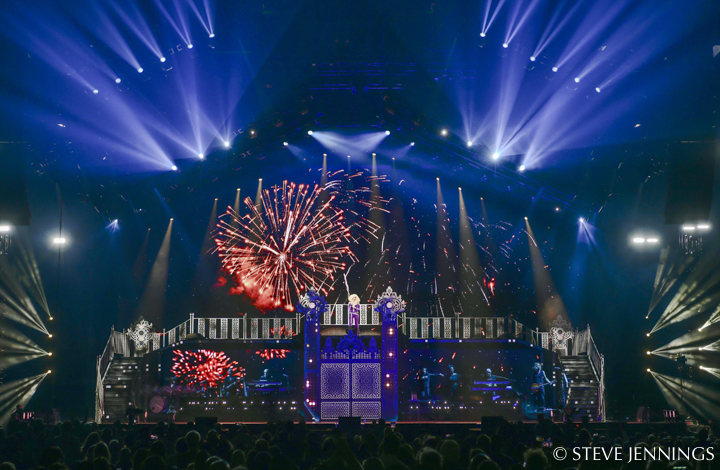
On this show, Marchwinski was joined by Zach Peletz at FOH who was handling video/disguise programming. They had about seven days in previz to program the show, with four days on site for rehearsals. This allowed them to show up on site with something programmed for every song. “We of course knew that there would be changes, but for this particular show, the on-site schedule was really tight, so we had to come in with our homework done. The set list changed a little bit, and we even added a few of the ABBA songs once we got into rehearsals, which were surprisingly fun to program.
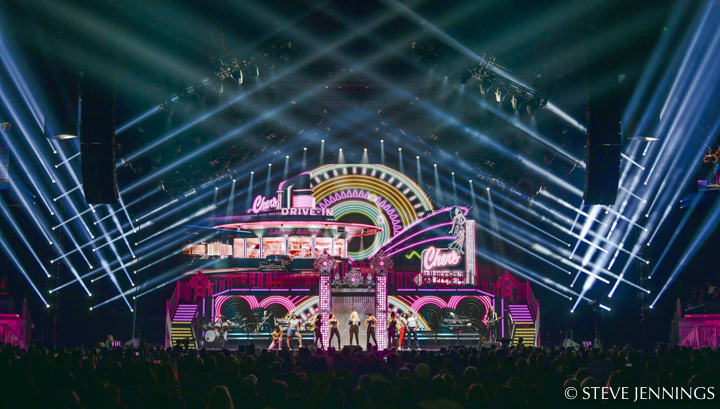
“Due to reasons beyond our control, this show was subject to four variations of fixture types by the time the tour was underway. We programmed the show on Rig A, did our rehearsals and 1st show on Rig B, did our second show and remaining Australia tour on Rig C, and finally settled in on the Las Vegas and U.S. tour dates on Rig D, which was very close in fixture types to Rig A. Zach (Peletz) on the video side had fewer variables, but a similar amount of different screen sizes and resolutions — a mind-numbing process to try and manage without creating a dumpster fire in a singular show file. These changes came after we had finished previz, so we needed to find a clean way to adapt what programming we had, keeping in mind the further fixture swaps beyond rehearsals and show one. We found creative workarounds for carrying fixture attribute data forward (dummy attributes) and were able to swap fixture types instead of clone for every different rig to avoid bloating the show file. This was really the only way to handle this; otherwise we would end up having to clone in multiple directions (i.e. back onto original fixtures, then back onto new fixtures) since we had a fixture type swap for our rehearsal period, where the most changes were made.”
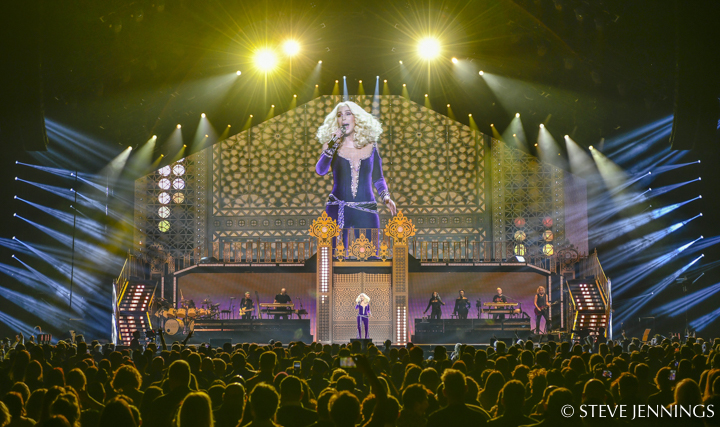
Workflow as a programmer is the most important tool in your entire arsenal, notes Marchwinski, including everything from macros, to spreadsheets to emails to FOH setup. “Knowing why you are going about something a certain way, or how to make that better, is something that only you can develop on your own. Look at the way others do it, ask yourself ‘why?’, and see if that works for you. There’s no wrong or right way to do something, but there is a less efficient way. Repetitive operations breed muscle memory, and the amount of conscious thought you have to put into getting a creative idea on stage will slowly lessen, opening your mental bandwidth for more creative thought. Don’t be afraid to ask questions, share what you know, or admit what you don’t. We all have stories of others giving back and sharing their knowledge, and we should all continue to help each other no matter what level of experience, in the same way.”

Steve Foster
Lighting Director
Steve Foster says he was contacted by Steve “Six” Schwind in late December 2018 to take over as lighting director for Cher. “He is a great friend of mine that I had finally met on Selena Gomez’s Revival Tour in 2016, even though we knew of each other for quite some time beforehand. He was about to pick back up with Pink’s Beautiful Trauma world tour, and there were some conflicting dates so I came in to replace him. I was only on the tour for two weeks before I did my first residency, which was in March of 2019. I also did the August 2019 residency, and I’m currently in the middle of the February 2020 residency all at the Park Theater in Las Vegas.”

Foster has been working with Halpin since 2015, taking out a few of the many shows that he designs. “He has built an incredibly efficient team and process that is equally impressive on the creative side as it is on the technical and logistical side. They continue to push boundaries creatively, always put out a great show, and are a pleasure to work with on top of it all. Eric (Marchwinski) and I go back all the way to high school, and I consider him my unrelated brother. Whenever I take over shows that he has programmed, there is always some new brilliant way to do a hit or a new macro that cuts tons of keystrokes, as well as amazing art that comes out of the console. I have been fortunate enough to work alongside one of my best friends in this industry for many years and be a part of his team that he and Kirk J Miller have built with Earlybird Visual.
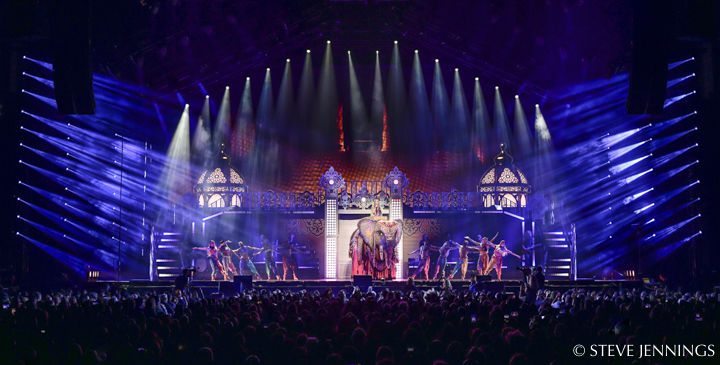
“On the touring side, our production manager, Gilbert “Pork Chop” Castilleja, is as cool as they come. Chop runs one of the best camps you could ask for. Between him and Derek Wilson, our production coordinator, we are spoiled with how good they treat us. We are always prepared for whatever challenges arise onsite, great communication, great people — you can’t ask for anything more. Since I’ve been here, I have had two lighting crew chief’s from Solotech, David Bergeron and Vincent Cadieux, that I couldn’t be happier with. Our rig is always up and ready very quickly, and our lighting team keeps everything in great shape, always with a great attitude, and they’ve become good friends. Our video director, Richard Parkin does a great job cutting our two-bus show, feeding cameras to both the Upstage Video wall and the side I-Mag screens. Our video crew chief Eric Simard, engineer Bo O’Brian and the rest of the video team do a great job keeping all the camera shots looking consistent despite so many different colored costumes and wigs being changed the entire show on top of the dynamics of the lighting rig.”

Foster says most of the show runs on timecode. There are 8,000 time-coded cues that run the set list every night, with some manual sections of the show where things change on a day-to-day basis. “It has become rather rare these days for me to run a show without timecode, as we rely on it to sync all departments so audio, visuals, and show cues are perfectly timed. It certainly has its advantages — being able to record your actions and keep layering them via timecode tracks, having the power to shift all the hits of a song to match the delay of the PA, whether in an arena or stadium, or line events up perfectly for TV, film or live broadcast. As an operator, I do personally love running a show live with no code, as it taps into my roots of being a musician. Our opening act, Nile Rodgers & Chic is the original Studio 54 band who play an amazing set with no timecode, which is the perfect scenario for me, because I get to run their set all live to get the blood pumping, just in time for us to start our set. So it’s a nice balance.”

Cher “Here We Go Again” Tour 2020
Crew
- Producer & Lighting Designer: Baz Halpin/Silent House Productions
- Production Designer: Vincent Richards/Silent House
- Associate Lighting Designer & Programming: Eric Marchwinski/Earlybird Visual
- Lighting Director: Steve Foster/Earlybird Visual
- Lighting Co: Solotech
- Lighting Crew Chief: Vincent Cadieux
- Lighting Techs: Colton “Coco” Cowan, Mathieu “Mon Amie” Blais, Michel Pomerleau, Kevin Chan
- Tour Manager: Donna Parise
- Tour Director: Nick R. Cua
- Production Manager: Gilbert “Chop” Castilleja
- Production Coordinator: Derek Wilson Sr.
- Production Assistant: Keith Richardson II
- Stage Managers: Frank Carra, Gregory Richard Bogart
- Video Content Creation: Geodezik, Olivier Goulet
- Video Content Creative Director: David Fafard
- Additional Video Content: Silent Partners Studio (JT Rooney)
- Video Programmer: Zach Peletz
- Video Director: Richard Parkin
- Video Co: Solotech
- Video Crew Chief: Bryan Keyes
- Video Techs: Bo O’Brien, Ben Rotella, Roger Rubey, Ken Bowman, Felix Bergeron
- Staging & Automation: Tait
- Automation Crew Chief: Andrew Johnstone
- Automation Tech: William “Emo” Shewmake Jr
- Security: Colin Lish
- Show Runner: Seanne Farmer
- Riggers: Stephen Olean, Eric Duheaney III
- Carpenters: Eduardo Rodriguez (Head), Paul Brackett, John Carra, Bryson Duheaney, Jerzy Siewierski
- Trucking: Truck’N Roll
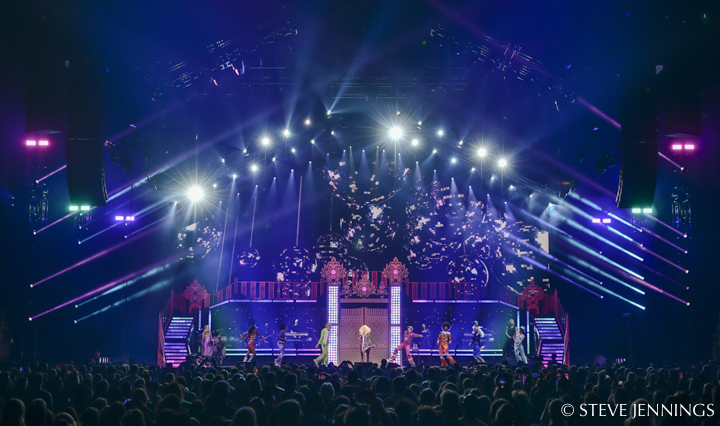
Gear
Lighting:
- 2 grandMA2 full size consoles
- 1 grandMA2 Light console
- 4 grandMA2 NPU’s
- 65 Claypaky Scenius Unicos
- 19 Claypaky Scenius Spots
- 54 Claypaky Sharpys
- 46 TMB Solaris Flare Q+ LR’s
- 12 TMB Solaris Flares
- 19 GLP impression X4’s
- 16 GLP impression X4 Bar 20’s
- 16 Chauvet Nexus 4×4 Panels
- 8 Chroma-Q Color Force II 72’s
- 6 Robe BMFL Robospots
- 2 MDG TheOne hazers
- 2 RGB LED tape systems
- 1 Leprecon dimmer
- 1 Luminex network system
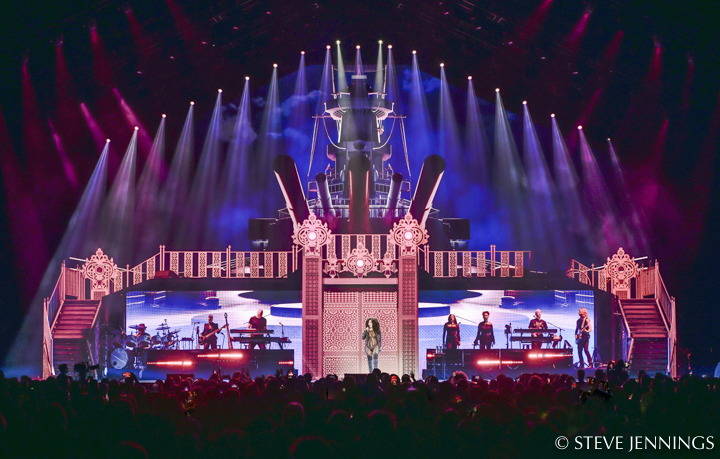
Video:
- 1 disguise 4×4 Pro media server system setup
- 1 Upstage wall (704 Saco s9 tiles/2112 x 768 res.)
- 2 Band riser screens (SR/SL) w/72 Saco s6 tiles/792 x 396 res.
- 6 Christie J Series 20K HD Projectors (1920 x 1080 res.), for 2 I-Mag screens, 2 270 I-Mag screens, 2 Kabuki projections.
- 1 Grass Valley camera package
- 3 Panasonic HE130 robo cameras
- 3 Marshall PTZ POV cameras
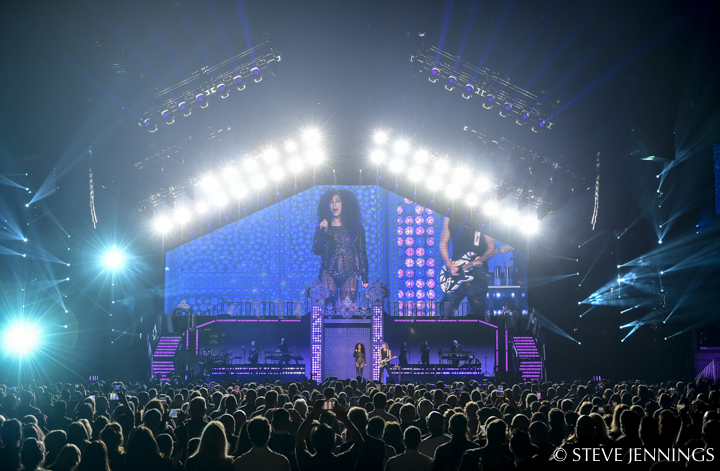
More Cher “Here We Go Again” 2020 tour photos by Steve Jennings:

